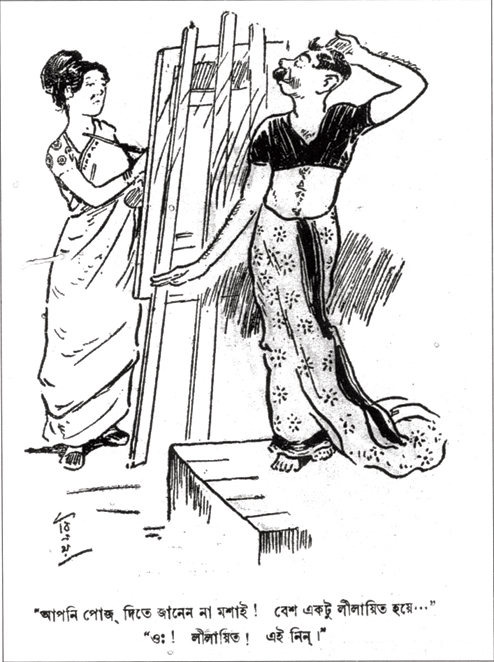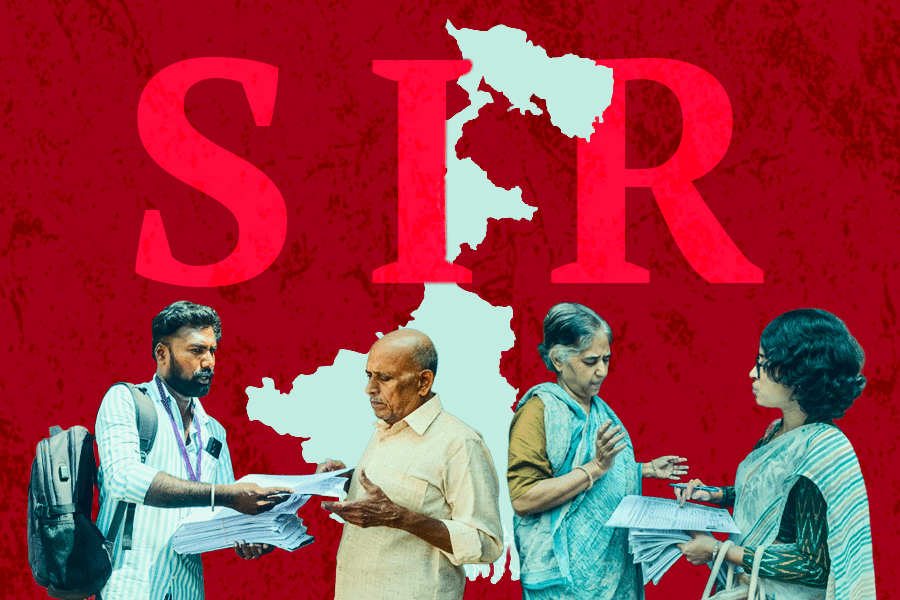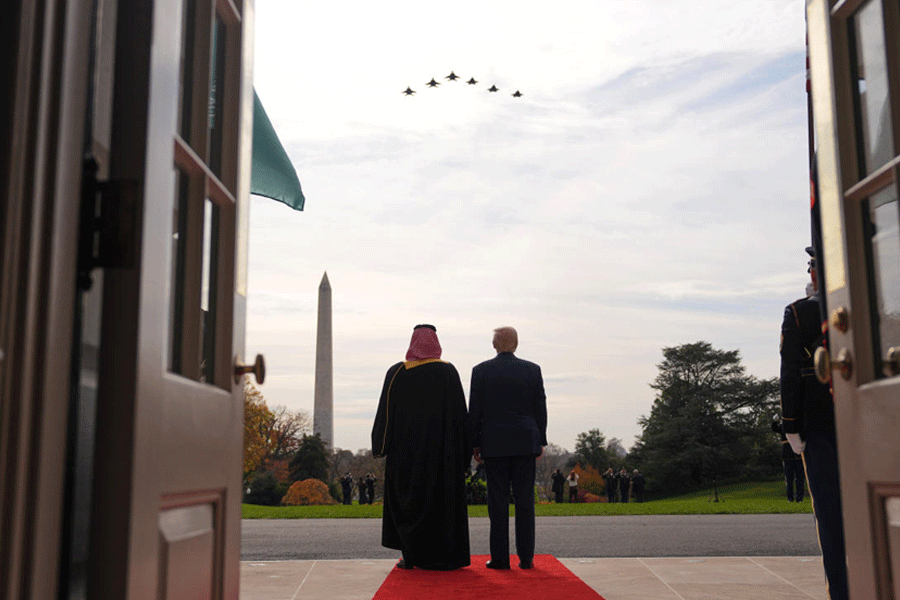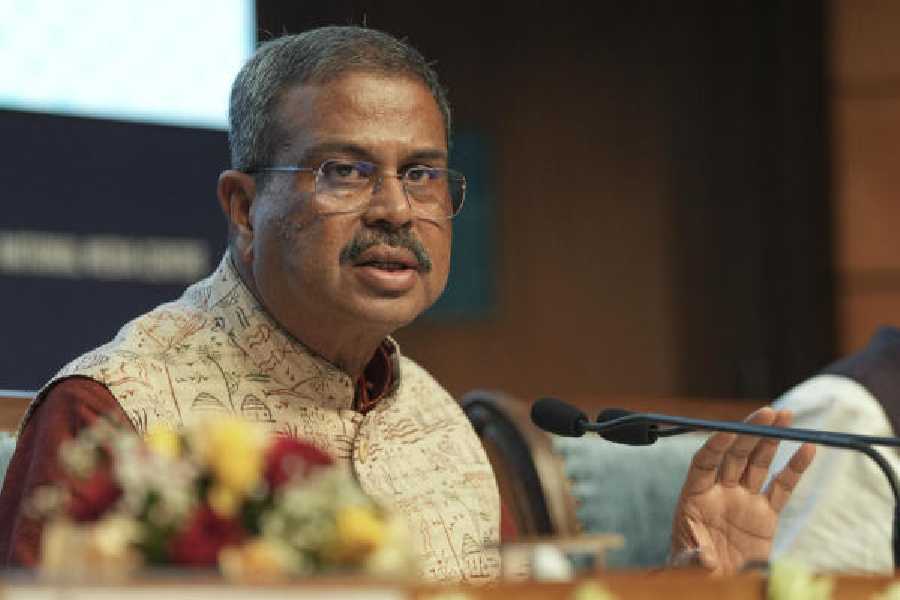 |
| One of the cartoons at the exhibition showed a woman artist asking her male subject to pose more seductively |
The climate may not be very friendly for cartoons in the state now, but Bengali cartoons have a rich past, which was evident at an exhibition held by Cartoon Dol, a group of cartoonists. At ‘Bangla Cartoon’, held at Maya Art Space in Kasba between August 8 and 16, the exhibits were a small, but interesting and varied selection of cartoons printed in Bengali publications from 1872 to 2014.
A set of early 19th century cartoons on women stand out. They are finely drawn, very funny and reactionary. They betray fears about the possible effects of “modernity” and westernisation on gender roles, a great area of worry. Two are by Jatindra Kumar Sen, from his series Nari Bidroho, published in the periodical Manashi o Marmabani (Bengali year 1326). Sen was also the illustrator of stories by Parashuram (Rajsekhar Basu). One cartoon shows a sari-clad gentlewoman smoking a cheroot. The other one has a servile husband offering tea to his wife, who is reclining on the bed. The title of the picture is “A Modern Bengali Woman”.
Four others, by Benoy Kumar Basu, published in his book Meyemahal (Bengali year 1334), paint an even more abject picture of male subordination. One shows a young Bengali bride leading the groom and commanding him in English. Another has a policewoman in an aggressive posture, speaking, again, in English. The third shows a woman collapsing in a drunken stupor while the nervous husband watches from behind a door. The fourth is excruciating: it has a woman artist painting a model: it’s a mustachioed man, wearing a sari, and quite deshabille, and the woman is ordering him “to pose” in a more seductive way.
It is not possible to say what disturbed the cartoonists – all were men — more —the cheroot, the English, or just words in the mouth of women. Shubhendu Dasgupta, a former professor of economics and current researcher of Bengali cartoonists, who contributed the cartoons from his collection and conceptualised the show, however, felt that these depictions of women were not unambiguously misogynist.
Some things don’t change. A cartoon by Gaganendranath Tagore, published in Prabasi (Bengali year 1324), has a corpulent old man, a schoolmaster, in fiery red clothes and with matching red eyes and red lips, glaring at a small bird in a cage, saying: “Bird, stop singing your song of spring, say A B C D instead!”
There were cartoons by artists who are better-known otherwise: Somnath Hore and Chittoprosad. There is one by Banaphool, the author. An ad for a cartoon school run by Narendranath Roy, or Sufi, also featured in the exhibition.
Among the later cartoonists featured were the celebrated Chandi Lahiri and Kutty, as well as the contemporary artists Anup Ray, Debashish Deb, Sentu and Upal Sengupta. The curator Debdutta Gupta in his note says the oldest cartoon in the exhibition, about the obsequious “deputy” of a colonial boss, dates back to 1872 in Amrita Bazar Patrika. From then periodicals such as Harbola Bhnar and Basantak, and later Sachitra Bharat and Saras Cartoon, became cartoonists’ platforms.
A 1988 cartoon by Kutty shows Rajiv Gandhi in Gandhiji’s clothes, but leaning on, instead of the stick, a gun. Those were the Bofors days.
A good belly laugh can shake foundations – of an individual, of an establishment. That’s why some people are afraid.
A complaint: instead of mixing the Bengali and the Western calendar, the exhibition could have maintained a uniformity in the dates.










